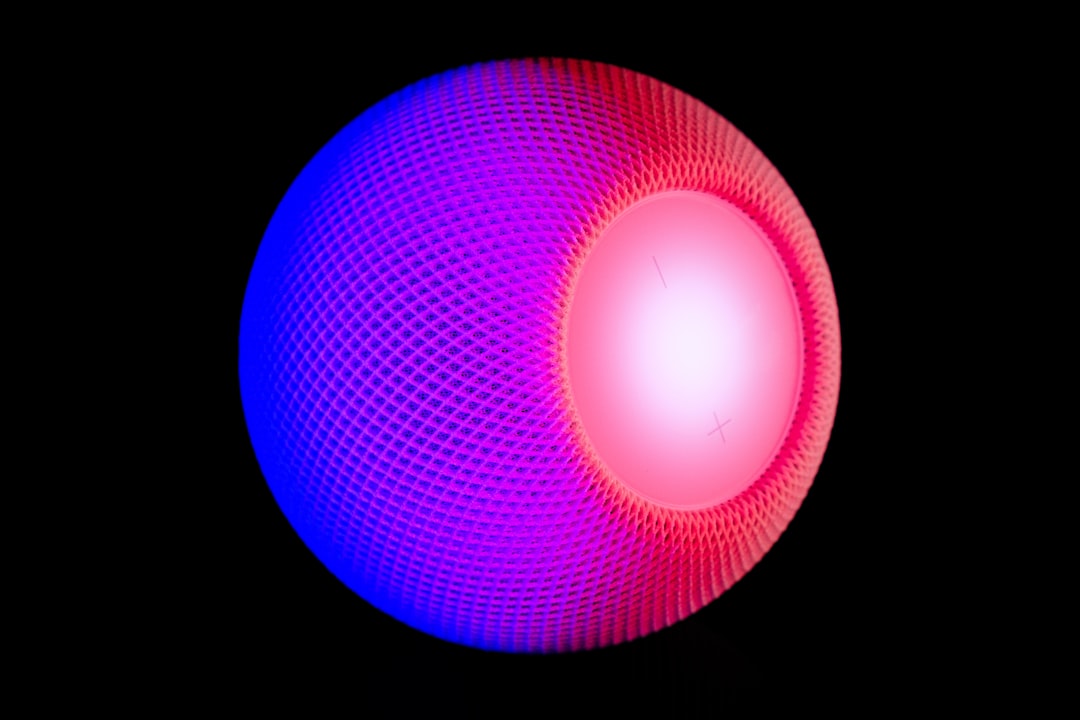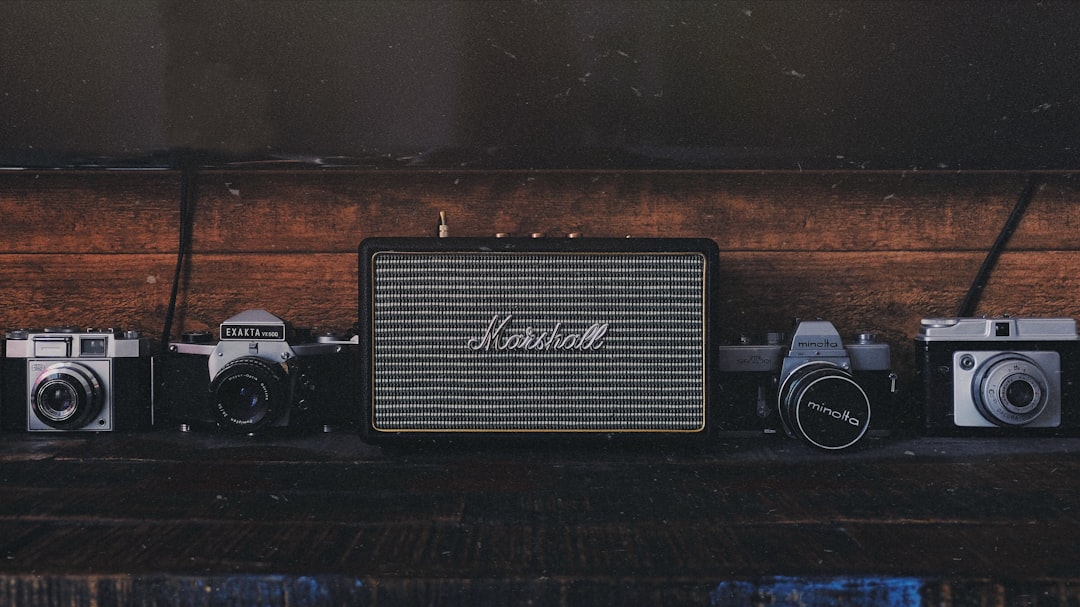Unlocking the intricacies of understanding Dolby Atmos in sound systems can lead to a transformative audio adventure within your own home. Imagine being enveloped in a symphony of sound where every whisper, explosion, and melody comes to life in a three-dimensional audio landscape. Embracing Dolby Atmos technology opens doors to a new realm of auditory experiences that redefine the way we engage with entertainment. Let's delve into the captivating world of Dolby Atmos and discover how it can elevate your sound system to unparalleled heights of immersion and realism.
Exploring Dolby Atmos: A Revolution in Sound Technology
Dolby Atmos is a groundbreaking audio technology that takes sound immersion to a whole new level. By understanding Dolby Atmos in sound systems, you can truly elevate your audiovisual experience. Here's a closer look at what makes Dolby Atmos such a game-changer:
What is Dolby Atmos?
Dolby Atmos is an object-based audio technology that allows sound to move around you in a three-dimensional space. Unlike traditional surround sound setups that channel audio into specific speakers, Dolby Atmos treats each sound as an individual object. This means that sound can come from anywhere in the room, creating a more realistic and immersive audio experience.
Evolution of Sound Systems
From the days of basic stereo sound to the introduction of surround sound systems, the audio landscape has constantly evolved. Dolby Atmos represents the latest advancement in sound technology, offering heightened realism and depth to audio playback. Understanding this evolution helps appreciate the significance of Dolby Atmos in modern sound setups.
Benefits of Dolby Atmos
Immersive Experience: Dolby Atmos transports you into the heart of the action, making you feel like you're part of the movie or music.
Precise Sound Placement: With Dolby Atmos, sound can be precisely located in a 3D space, adding a new dimension to audio playback.
Compatibility: Dolby Atmos is supported by a wide range of content, spanning movies, TV shows, music, and games, ensuring you can enjoy the benefits across various media platforms.
By grasping the essence of Dolby Atmos in sound systems, you unlock a new level of audio enjoyment that truly enhances your entertainment experience.
Setting Up Dolby Atmos: Key Components and Installation Tips
To fully embrace the power of Dolby Atmos in your sound system, it's essential to understand the key components required and follow proper installation techniques. By setting up Dolby Atmos correctly, you can enjoy a truly immersive and dynamic audio experience like never before.
Components Needed for a Dolby Atmos System
When incorporating Dolby Atmos into your sound setup, you will need the following components:
Dolby Atmos AV Receiver: This special receiver is designed to decode and process the Dolby Atmos audio signals.
Dolby Atmos-Compatible Speakers: Dedicated Dolby Atmos speakers or speakers with Dolby Atmos-enabled technology are essential for creating the immersive 3D sound field.
Subwoofer: A subwoofer is crucial for delivering deep, rich bass that complements the overall sound profile.
Speaker Cables and Wiring: High-quality speaker cables are necessary to connect the speakers to the AV receiver.
Placement of Speakers for Optimal Dolby Atmos Experience
Proper speaker placement is key to maximizing the Dolby Atmos effect. Consider the following tips:
Overhead Speakers: Ceiling-mounted speakers or Dolby Atmos-enabled speakers placed above the listening area can provide the best overhead sound effects.
Height Speakers: Speakers positioned at ear level but above the traditional surround sound speakers can enhance the vertical audio dimension.
Optimizing Speaker Angles: Angling the speakers towards the main listening position helps direct the sound precisely.
Calibration and Setup Tips
To ensure your Dolby Atmos system functions at its best, follow these calibration and setup tips:
Run Room Calibration: Most AV receivers come with room calibration features that adjust audio settings based on the acoustics of your room.
Speaker Configuration: Ensure the AV receiver is properly configured to recognize the Dolby Atmos speakers and channels.
Fine-Tuning: Experiment with speaker placement and settings to fine-tune the audio output according to your preferences.
For additional guidance on setting up Dolby Atmos systems, you can refer to official guides provided by reputable companies like Dolby. By understanding the components and installation intricacies of Dolby Atmos, you pave the way for a transformative audiovisual experience.
Dolby Atmos vs. Traditional Surround Sound: Understanding the Differences
When delving into the realm of sound systems, it's crucial to distinguish between Dolby Atmos and traditional surround sound setups to grasp the significant advancements in audio technology. By understanding the differences between Dolby Atmos and traditional surround sound, you can make informed decisions when enhancing your audiovisual experience.
Comparison Between Dolby Atmos and Traditional Surround Sound Systems
Channel-Based vs. Object-Based Audio: Traditional surround sound systems use channels to direct audio to specific speakers, while Dolby Atmos employs object-based audio, allowing sound to move freely in a three-dimensional space.
Immersive Depth: Dolby Atmos provides a more immersive audio experience by precisely placing sounds around and above you, creating a lifelike audio environment that traditional surround sound cannot replicate.
Scalability: Dolby Atmos systems are scalable, allowing you to add more speakers for enhanced audio depth and dimension, whereas traditional surround sound is limited by the number of channels.
Dolby Atmos Enhancing Audio Realism and Immersion
Dolby Atmos' object-based audio technology is at the forefront of revolutionizing sound systems by offering:
Heightened Realism: By simulating sound sources in a 3D space, Dolby Atmos delivers a more realistic and engaging audio experience.
Adaptive Sound: Dolby Atmos adapts to the speaker setup in your room, optimizing the audio output for the best possible listening experience.
Dynamic Audio Objects: With Dolby Atmos, audio objects can move freely throughout the room, adding a new dimension to sound immersion.
Why Dolby Atmos Is the Future of Sound Systems
As technology continues to advance, Dolby Atmos stands out as the future of sound systems for several reasons:
Innovative Audio Technology: Dolby Atmos represents the pinnacle of audio innovation, offering unparalleled audio realism and immersion.
Content Support: With an increasing number of movies, TV shows, and games embracing Dolby Atmos, it is becoming the industry standard for immersive audio experiences.
Understanding the distinctions between Dolby Atmos and traditional surround sound empowers you to make informed choices when elevating your sound system to new heights of audio excellence.
Dolby Atmos in Home Theaters: Creating a Cinematic Experience
Transforming your home theater into a cinematic paradise with Dolby Atmos technology opens up a whole new world of audiovisual delight. By incorporating Dolby Atmos into your home theater setup, you can immerse yourself in a captivating audio experience that rivals a movie theater atmosphere.
Dolby Atmos Technology in Home Theaters
Dolby Atmos technology enriches the home theater experience by:
Immersive Audio: Surrounding you with multidimensional sound that enhances every movie, TV show, or game you watch.
Precise Sound Placement: Positioning audio in a 3D space to create a lifelike environment that pulls you into the heart of the action.
Enhanced Dialog Clarity: Ensuring crystal-clear dialog delivery even amidst complex sound effects and background noise.
Choosing the Right Audio Equipment
When setting up Dolby Atmos in your home theater, consider the following audio equipment:
Dolby Atmos-Compatible AV Receiver: Select a receiver capable of decoding Dolby Atmos signals and supporting the number of speakers you plan to install.
Dolby Atmos Speakers: Invest in Dolby Atmos-enabled speakers or elevation speakers to achieve the overhead audio effects integral to Dolby Atmos.
Soundbar with Dolby Atmos: For those seeking a more compact setup, soundbars with Dolby Atmos technology offer a space-saving solution without compromising on audio quality.
Optimizing Your Home Theater Setup
To ensure your home theater is ready to deliver a cinematic Dolby Atmos experience, follow these optimization tips:
Room Acoustics: Consider the acoustics of your room and make acoustic enhancements if necessary to minimize sound reflections.
Speaker Placement: Position your Dolby Atmos speakers according to manufacturer recommendations for optimal audio immersion.
Calibration: Utilize the calibration features of your AV receiver to fine-tune the audio output to suit your room's specific acoustics.
By integrating Dolby Atmos into your home theater, you can create a cinematic sanctuary where every viewing experience is elevated to new heights of audio excellence.
Expanding Your Sound System: Integrating Dolby Atmos into Existing Setups
Upgrading your current sound system to include Dolby Atmos technology can significantly enhance your audiovisual experience. By understanding Dolby Atmos in sound systems, you can seamlessly integrate this cutting-edge audio technology into your existing setup to enjoy immersive and dynamic sound like never before.
Upgrading to Dolby Atmos
When transitioning to Dolby Atmos, consider the following steps:
Assess Compatibility: Check if your current AV receiver and speakers are Dolby Atmos compatible or if you need to invest in new equipment.
Adding Height Channels: Incorporate height channels by installing ceiling-mounted speakers or Dolby Atmos-enabled speakers to create the overhead audio effects unique to Dolby Atmos.
Expanding Your Speaker Setup: Expand your speaker configuration to accommodate the additional channels required for Dolby Atmos, ensuring you achieve the intended audio immersion.
Compatibility Considerations
To seamlessly integrate Dolby Atmos into your existing system, keep the following compatibility factors in mind:
AV Receiver Compatibility: Ensure your AV receiver supports Dolby Atmos decoding and processing.
Speaker Positioning: Place Dolby Atmos speakers as recommended by the manufacturer to optimize the audio effects.
Cable Management: Plan for proper cable management to connect the additional speakers without cluttering your entertainment space.
Transforming Your Sound Experience
By incorporating Dolby Atmos into your setup, you can transform the way you experience movies, music, and games:
Immersive Audio: Dive into a three-dimensional sound experience that surrounds you from all angles, immersing you in the audio environment.
Enhanced Realism: Enjoy heightened audio realism with precise sound placement that brings every sound to life.
Future-Proofing Your System: Embrace the future of sound technology by upgrading to Dolby Atmos, ensuring your system remains relevant and cutting-edge for years to come.
Integrating Dolby Atmos into your existing sound system opens up a world of audio possibilities, delivering a truly immersive and dynamic listening experience that will revolutionize your entertainment space.
FAQ Section
Is Dolby Atmos only beneficial for home theaters, or can it enhance other audio setups?
Dolby Atmos is not limited to home theaters; it can enhance various audio setups, including living rooms, gaming setups, and even music listening areas. Its 3D audio technology is versatile and adaptable to different environments, providing an immersive experience regardless of the setup.
Do I need special Dolby Atmos speakers to enjoy Dolby Atmos content?
While specialized Dolby Atmos speakers can enhance the experience, you can still enjoy Dolby Atmos content with standard speakers by leveraging Dolby Atmos-enabled technology. This technology re-creates overhead effects without the need for ceiling-mounted or specialized speakers.
How does Dolby Atmos compare to traditional surround sound systems in terms of setup complexity?
Setting up a Dolby Atmos system may seem more complex due to the additional overhead speakers, but advancements in AV receiver technology have simplified the installation process. Many AV receivers now come with automated calibration features that make configuring your Dolby Atmos setup easier than ever.
Can I experience Dolby Atmos through headphones or soundbars?
Yes, you can enjoy Dolby Atmos through compatible headphones or soundbars that incorporate Dolby Atmos technology. This allows for a personalized and immersive audio experience even without a full speaker setup, ideal for those with limited space or looking for a more compact solution.
Are all movies and music albums available in Dolby Atmos format?
While the library of Dolby Atmos content continues to expand, not all movies and music albums are currently available in Dolby Atmos format. However, with the increasing popularity of Dolby Atmos, more content creators are embracing this technology to deliver enhanced audio experiences to their audiences.




